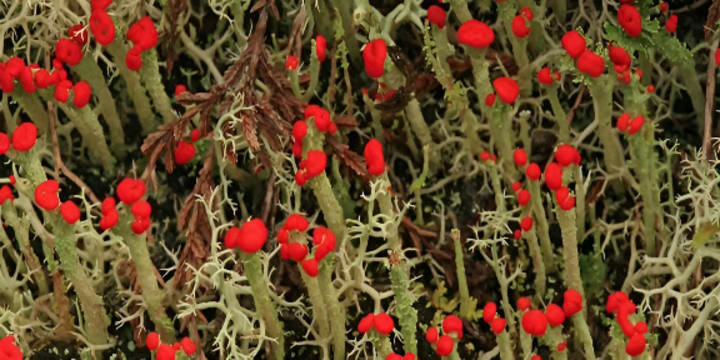
Plants, despite their seemingly stationary nature, have the ability to socialize and interact with their environment in remarkable ways. From communicating with other plants to responding to environmental cues, their complex interactions reveal a level of interconnectedness that challenges our understanding of plant life. Certainly, the existing separation between numerous individuals and the environment seems to contradict biophilia, which is the inherent human inclination to engage with other living beings like plants and animals. Incorporating a connection with nature, rather than functioning as a separate entity within it, is a crucial element in addressing both social and environmental issues.
Symbiosis: Plant Relationships and Survival

Plants, like all living organisms, have evolved various strategies to ensure their survival in a constantly changing environment. One such strategy is symbiotic plant relationships, which involve mutually beneficial interactions between plants and other organisms. These interactions can take different forms and play a crucial role in the survival and success of plants.
Plants engage in various types of symbiotic relationships with other organisms, including fungi, bacteria, animals, and even other plants. These interactions contribute to nutrient acquisition, disease resistance, and overall ecosystem functioning.
Plant symbiotic relationships highlight the complexity of interactions within ecosystems and demonstrate how species have evolved to depend on one another for survival, growth, and reproduction. Symbiosis is a critical aspect of plant biology that contributes to the diversity and resilience of natural systems. These plant relationships can be grouped into three associations namely mutualism, commensalism and parasitism.

Mutualism
Mutualism is a type of ecological symbiotic relationship between two different species in which both species benefit from the interaction. In other words, it's a symbiotic relationship where both organisms gain advantages that contribute to their survival, reproduction, or other important aspects of their life cycles. Mutualism is a fascinating aspect of ecological interactions, highlighting how species can cooperate and depend on each other for mutual gain.
Mutualism is characterized by reciprocal benefits for both parties involved. This type of interaction can take various forms and can occur in diverse ecosystems.
Here are a few examples of mutualism in nature:
1. Pollination Symbiosis:
Bees, butterflies, birds, and other pollinators interact with flowers to obtain nectar, which they use as a food source. In the process, they inadvertently transfer pollen between flowers, facilitating the reproductive process for many plant species.

2. Mycorrhizal Associations:
Mycorrhizal fungi form partnerships with the roots of plants. The fungi enhance the plant's ability to absorb water and nutrients from the soil, while the plant provides the fungi with sugars produced through photosynthesis.

3. Nitrogen-Fixing Bacteria and Legumes:
Certain bacteria, like Rhizobium, live in nodules on the roots of legumes like beans. These bacteria transform atmospheric nitrogen into a usable form for plant growth, and in exchange, the plants supply the bacteria with sugars.

4. Acacia Trees and Ants:
Acacia trees provide shelter and food in the form of nectar to ants that live in the trees' thorns. In return, the ants defend the trees from herbivores by attacking potential threats.

Commensalism
Commensalism is a type of ecological relationship between two different species in which one species benefit while the other is neither significantly helped nor harmed. In other words, it's a symbiotic relationship where one organism benefits, and the other organism is essentially unaffected. This can occur in various ecosystems and environments, and it's an interesting aspect of how different species interact and adapt to their surroundings. In commensalism, the organism that benefits is referred to as the "commensal," while the other organism, which remains neutral in terms of benefits or harm, is the "host." The commensal organism often gains advantages like shelter, food, or support from the host organism, without causing any noticeable negative impact on the host.
Here are a few examples of commensalism in nature:
1. Epiphytic Plants on Trees:
Epiphytic plants, like some types of orchids and mosses, grow on the branches of trees. They use the tree as support to reach sunlight, moisture, and nutrients from the air and rain. The trees don't derive any direct benefit nor harm from these epiphytes.

2. Birds Nesting in Trees:
Birds that build their nests in trees can create small shelters using the branches and foliage. While the birds benefit from protection and a place to lay their eggs, the tree generally isn't harmed by this arrangement.

Parasitism
Parasitism is a type of ecological relationship between two different species in which one species, known as the "parasite," benefits at the expense of the other species, known as the "host." In this relationship, the parasite derives various advantages from the host, often causing harm or detriment to the host organism. This interaction is a form of symbiosis, where organisms of different species live closely together, but it's characterized by the parasitic organism benefiting while the host suffers.
Parasites have evolved various adaptations to exploit their hosts. These adaptations can include physical structures, behaviors, or physiological mechanisms that help the parasite attach to the host, obtain nutrients, and complete its life cycle. Parasites can affect hosts in a range of ways, from causing mild discomfort to severe health issues and even death.
Here are a few examples of plant parasitism in nature:
1. Mistletoe on Trees:
Mistletoe is a parasitic plant that grows on the branches of trees. It taps into the host tree's vascular system to obtain water and nutrients, weakening the host and sometimes causing its decline.

2. Parasitic Fungi and Insects:
Certain parasitic fungi infect insects, using them as hosts to complete their life cycle. These fungi can manipulate the behavior of the host, causing it to climb to a higher position before the fungus releases spores that spread to other potential hosts.
Parasitism can be a complex interaction in ecosystems, as it can influence population dynamics, evolutionary adaptations, and even the health of entire ecosystems. While parasites can have negative impacts on their hosts, they are also a vital part of natural ecosystems and play a role in regulating population sizes and maintaining biodiversity.

About the Creator
iCi BuZz
Bleed on paper.
Upload the creative juices.
Replicate my inner self on blogs.
Sounds like you?
Welcome to my inky fraternity.
Yours truly,
iCi BuZz





Comments
There are no comments for this story
Be the first to respond and start the conversation.